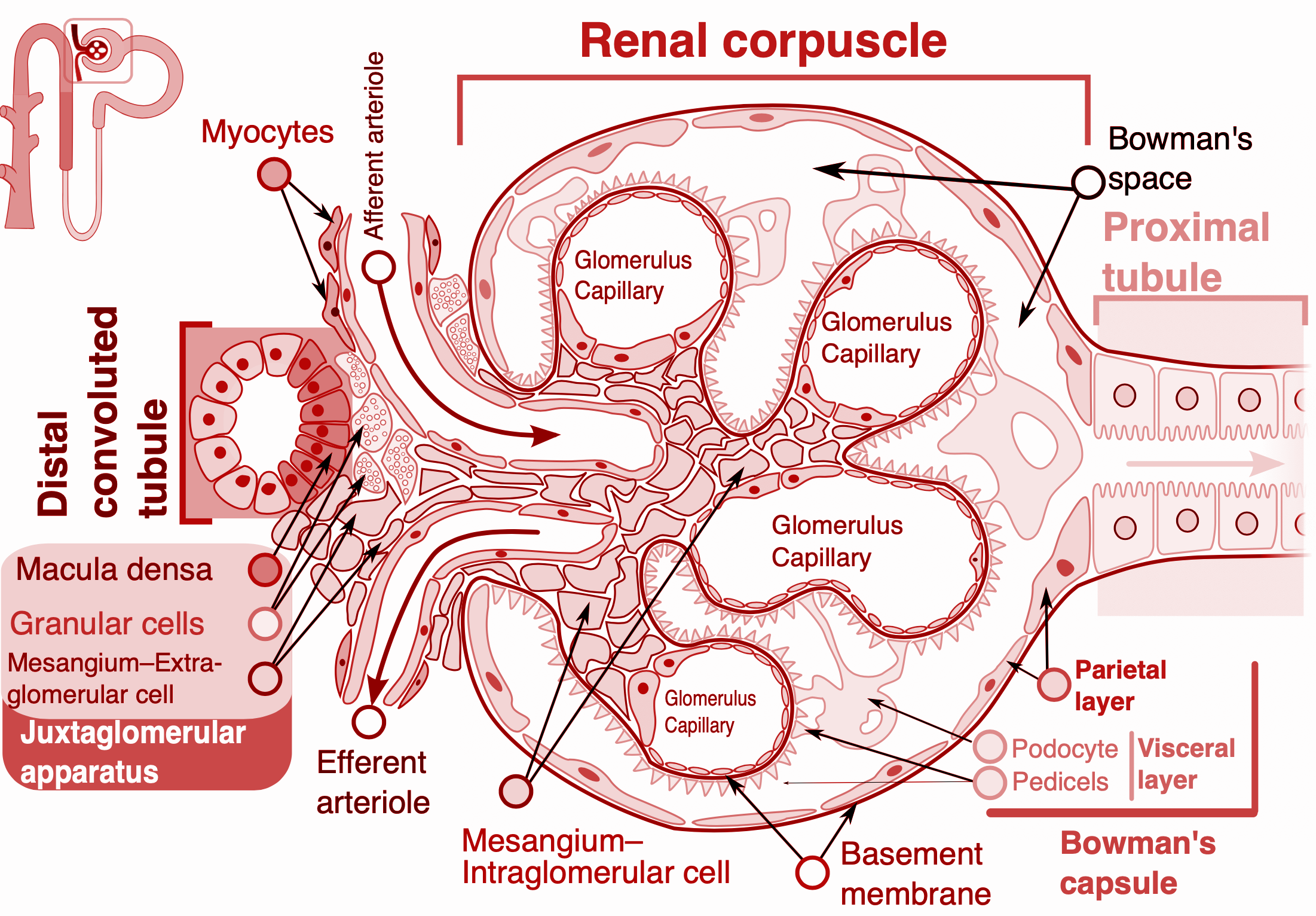
In the kidney, macula densa is present in
(a) Proximal convoluted tubule
(b) Loop of Henle
(c) Distal convoluted tubule
(d) Bowman’s capsule
Answer
489.9k+ views
2 likes
Hint: The macula densa cells are part of the juxtaglomerular apparatus. Their function is to regulate the functioning of kidneys by observing the conditions of the blood pressure to maintain homeostasis in the body.
Complete Step by Step Answer:
The macula densa is found at the place where the distal convoluted tubule touches the afferent arteriole of the glomerulus. There is a thick lining of these cells present on the lining of DCT at this junction. The function of macula densa is that they act as salt checkers. They detect when there is a change in the sodium levels in the blood and release chemicals that allow the body to reabsorb or release sodium to bring back its level to normal.

So, the correct option is ‘Distal convoluted tubule’.
Additional information: Let us discuss the functioning of the juxtaglomerular apparatus in detail. A fall in the glomerular filtration rate GFR activates the JG cells to release renin which converts angiotensinogen in the blood to angiotensin I. This is further converted into angiotensin II which is a powerful vasoconstrictor, increases the blood pressure thus increasing GFR. Angiotensin II also stimulates aldosterone secretion which causes reabsorption of sodium and water from the distal parts of the nephron.
Note:
- There are receptors in the hypothalamus that detect a change in osmotic concentration and stimulate the release of the antidiuretic hormone ADH or vasopressin to regulate the kidney’s function.
- The atrial wall of the heart also releases atrial natriuretic factor ANF and acts as a check on the renin- angiotensin mechanism.
Complete Step by Step Answer:
The macula densa is found at the place where the distal convoluted tubule touches the afferent arteriole of the glomerulus. There is a thick lining of these cells present on the lining of DCT at this junction. The function of macula densa is that they act as salt checkers. They detect when there is a change in the sodium levels in the blood and release chemicals that allow the body to reabsorb or release sodium to bring back its level to normal.

So, the correct option is ‘Distal convoluted tubule’.
Additional information: Let us discuss the functioning of the juxtaglomerular apparatus in detail. A fall in the glomerular filtration rate GFR activates the JG cells to release renin which converts angiotensinogen in the blood to angiotensin I. This is further converted into angiotensin II which is a powerful vasoconstrictor, increases the blood pressure thus increasing GFR. Angiotensin II also stimulates aldosterone secretion which causes reabsorption of sodium and water from the distal parts of the nephron.
Note:
- There are receptors in the hypothalamus that detect a change in osmotic concentration and stimulate the release of the antidiuretic hormone ADH or vasopressin to regulate the kidney’s function.
- The atrial wall of the heart also releases atrial natriuretic factor ANF and acts as a check on the renin- angiotensin mechanism.
Latest Vedantu courses for you
Grade 11 Science PCM | CBSE | SCHOOL | English
CBSE (2025-26)
School Full course for CBSE students
₹41,848 per year
Recently Updated Pages
Express the following as a fraction and simplify a class 7 maths CBSE

The length and width of a rectangle are in ratio of class 7 maths CBSE

The ratio of the income to the expenditure of a family class 7 maths CBSE

How do you write 025 million in scientific notatio class 7 maths CBSE

How do you convert 295 meters per second to kilometers class 7 maths CBSE

Write the following in Roman numerals 25819 class 7 maths CBSE

Trending doubts
State and prove Bernoullis theorem class 11 physics CBSE

What are Quantum numbers Explain the quantum number class 11 chemistry CBSE

Write the differences between monocot plants and dicot class 11 biology CBSE

1 ton equals to A 100 kg B 1000 kg C 10 kg D 10000 class 11 physics CBSE

State the laws of reflection of light

One Metric ton is equal to kg A 10000 B 1000 C 100 class 11 physics CBSE




